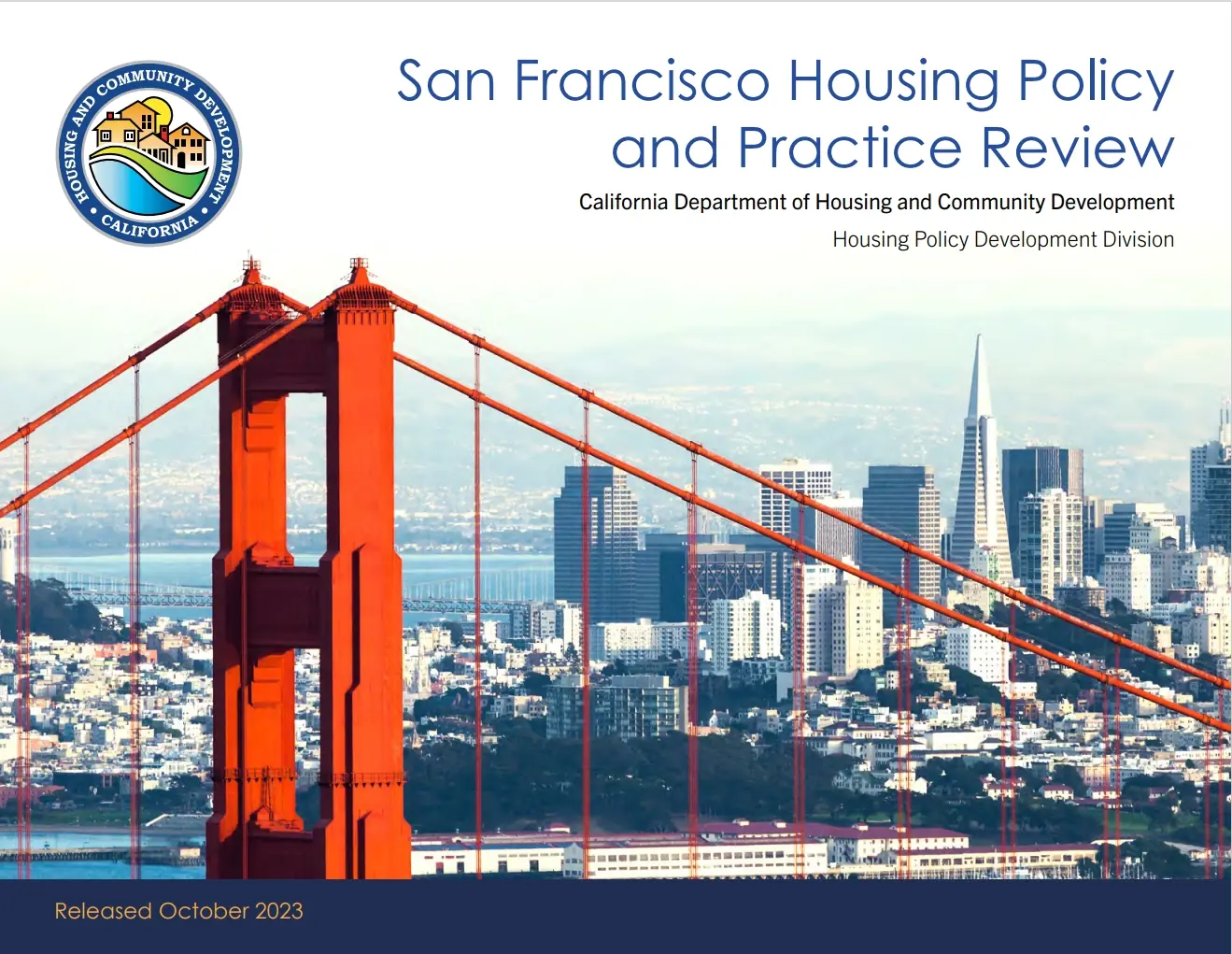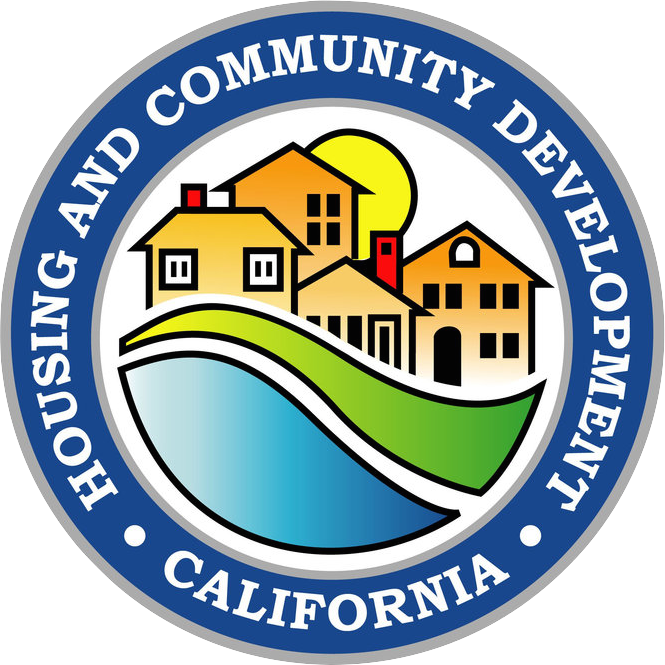Housing Accountability Unit’s Efforts Lead to San Francisco’s Progress in Removing Barriers to Housing Production
San Francisco Has Implemented Key Actions Required by HCD’s Housing Policy and Practice Review
August 2, 2024

In response to last year’s release of the California Department of Housing and Community Development’s (HCD) San Francisco Housing Policy and Practice Review (PDF) (PPR), San Francisco has implemented significant reforms that will make it easier to build housing at all income levels.
The PPR – a first of its kind investigation into a local government’s barriers to housing production – required San Francisco to implement 18 required actions beginning immediately and through 2026 that resolve inconsistencies with state law, accelerate housing production, and reduce barriers beyond the strong commitments already being made through San Francisco’s 6th Cycle Housing Element.
Since the release of the PPR, HCD has continuously monitored San Francisco's progress. As a result of this technical assistance from HCD and San Francisco's actions, they are currently up to date on required actions and, in some cases, implementing actions ahead of schedule. The PPR accelerated the passage of reforms already underway and supported the early completion of several actions proposed in San Francisco’s Housing Element.
These policy and practice changes can now begin to translate into real impact and results for development in San Francisco.
Some of the most significant reforms San Francisco has made to address their required actions include:
- Approving the Constraints Reduction Ordinance – The Constraints Reduction Ordinance was proposed shortly after the adoption of the Housing Element and signed into law on December 14, 2023, following technical assistance from HCD. The Ordinance fully or partially implements numerous housing element commitments, including reducing the need for Planning Commission hearings for certain code-compliant projects; allowing group homes throughout San Francisco, including within single family-zoned neighborhoods; modifying development standards such as lot size, lot width, and open space to reduce complexity in achieving compliance with zoning code requirements; and reducing notification requirements outside of Priority Equity Geographies for qualifying projects that provide net new housing. (See PPR Required Action 1.10.)
- Reforming CEQA processes to give a clear determination within 30 days of a complete application – San Francisco has modified its internal environmental review procedures to ensure that project applications are given a clear CEQA exemption determination within 30 days of accepting an application as complete. This infographic describes the revised typical planning review workflow for a non-ministerial project, including the environmental review. (See PPR Required Action 2.1.)
- Prohibiting subjectivity in planning approval – San Francisco has taken interim steps to remove the use of subjective criteria in reviewing housing projects for compliance. As San Francisco describes on its Planning Approval webpage, housing developments are no longer subject to any subjective or discretionary requirements found in applicable design guidelines, project analysis, and conditions of approval. (See PPR Required Actions 1.3, 1.4 and 1.9.) Future steps involve updating all documents to remove references to these subjective criteria.
- Increasing objectivity and transparency, in the construction permitting process – The City’s Department of Building Inspection (DBI) has implemented key changes to bring greater consistency, transparency, and objectivity to the post-entitlement review process. This includes updates to the DBI website to outline and ensure availability of submittal requirements for post-entitlement permits in one centralized location, establishing new quality control systems, weekly building code trainings, an escalation process to resolve code interpretation issues, and updates to an internal staff Plan Review Manual. (See PPR Required Action 4.1.)
- Restructuring processes so that developments that already received planning approval cannot be subject to subsequent building permit appeals – San Francisco separated out its planning and entitlement review process from the subsequent, post-entitlement building permit review process. This reform was key to properly implementing AB 1114 regarding post-entitlement review and ensures that qualifying projects which have already received planning approval cannot be subject to subsequent building permit appeals or additional hearing requirements. A summary of these changes can be found on the City's Planning Department, Department of Building Inspection (DBI), and building permit resubmission webpages. (See PPR Required Actions 3.1, 3.2, and 3.3.)
- Reducing procedural hurdles for code-compliant projects – The Conditional Use Authorization (CUA) process has been a barrier to facilitating timely approvals for code-compliant projects where residential development is already allowed and has induced discretion where state housing law does not allow for it. Through the Constraints Reduction Ordinance, San Francisco eliminated the requirement to obtain CUA for most code-compliant housing project types within Well Resourced Neighborhoods. (See PPR Required Action 1.2.)
- Removing hearing requirements for most State Density Bonus Law (SDBL) requests – Through the Constraints Reduction Ordinance and subsequent Planning Commission resolution, San Francisco delegated authority to the Planning Director to review most projects under the SDBL without the need for a hearing. In addition, San Francisco has changed how it applies local inclusionary housing requirements to projects using SDBL. This included revisions to San Francisco’s implementation bulletin. (See PPR Required Actions 1.7 and 1.8.)
Together, these actions help cut red tape and uncertainty, clarify opaque processes, and ensure compliance with state housing laws.
These changes represent important steps in the right direction and reflect a commitment to achieving a new status quo in San Francisco. Nevertheless, to ensure full implementation of the actions in both the PPR and the housing element – and to achieve housing production in San Francisco that truly meets the need – HCD will continue to provide ongoing support and monitor San Francisco’s progress on their 6 remaining PPR actions as they come due. The actions that San Francisco must still implement include the following:
- Revise entitlement processes to require that housing developments that conform to existing planning and zoning standards move efficiently through a non-discretionary, ministerial entitlement process. (See PPR Required Action 1.1, due Fall 2026.)
- Revise the Residential Design Guidelines and Urban Design Guidelines to remove all subjective standards and requirements. (See PPR Required Action 1.3, due October 2024.)
- Eliminate the use of “neighborhood character” and “neighborhood compatibility” terminology in relevant design guidelines. (See PPR Required Action 1.4, due October 2024.)
- Revise the Large Project Authorization in Eastern Neighborhoods and the Downtown Large Project Authorization processes to ensure approval criteria for housing projects are written and objective. (See PPR Required Action 1.9, due October 2024.)
- Eliminate additional requirements for supplemental environmental review not required by CEQA, such as shadow and wind studies. (See PPR Required Action 2.2, with an evaluation due October 2024 and changes due October 2026.)
- Reduce constraints on affordable housing developments, including removing public art requirements. (See PPR Action 4.2, due October 2024.)
By staying on track with these remaining items, San Francisco will continue to demonstrate its commitment to facilitating housing production at all income levels and ensure compliance with its obligations.

